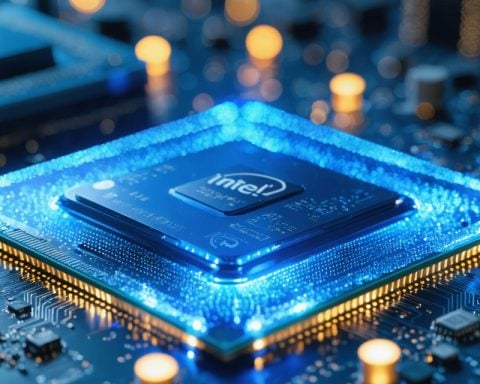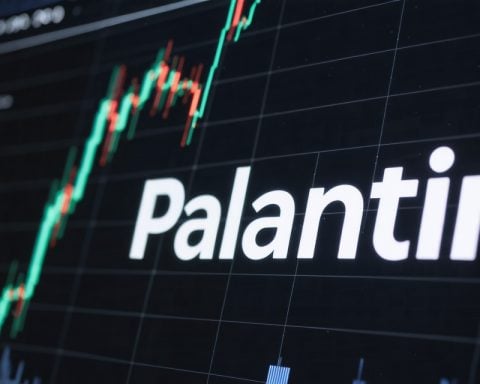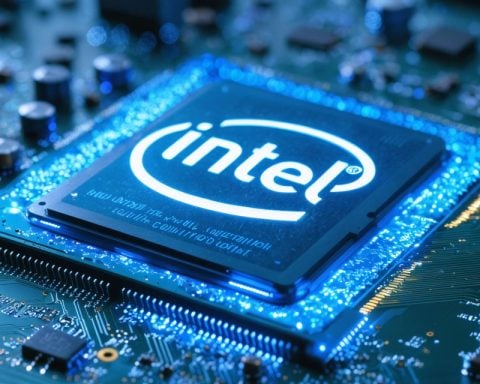Tencent, the Chinese tech giant, has made significant improvements to its HPC network, known as Xingmai, with the aim of enhancing its AI capabilities. According to reports, the upgrade has resulted in a 60% increase in network communication efficiency and a 20% improvement in LLM (Large Language Model) training.
In recent times, Chinese technology companies have been working towards reducing their reliance on foreign technology and overcoming export bans imposed by the United States. Tencent’s upgrade of the Xingmai 2.0 network is a prime example of this approach. The improved network not only enhances communication between computing clusters but also increases GPU utilization and reduces costs for the company.
Unlike its American competitors, who focus on acquiring cutting-edge semiconductors, Tencent has achieved its performance gains by optimizing its existing facilities. The upgraded network now supports over 100,000 GPUs in a single cluster, effectively doubling its initial capacity and significantly reducing problem-solving time.
In addition to infrastructure improvements, Tencent is actively promoting its own in-house developed LLMs for enterprise applications. The company also offers services to assist other companies in developing their own AI models. This strategy aligns with the current price war in China’s AI industry, with major firms like Tencent, ByteDance, Baidu, and Alibaba reducing costs to compete with their Western counterparts.
The upgraded network and advancements in AI capabilities position Tencent as a formidable player in the Chinese tech market. These developments not only enhance the company’s own AI capabilities but also contribute to China’s broader efforts to achieve technological self-reliance in the face of restricted access to advanced processors.
As Chinese tech giants continue to invest in research and development, it remains to be seen how they will further shape the global AI landscape and compete against their Western counterparts.
Additional facts:
1. Tencent is one of the largest technology companies in China, providing a wide range of services including social media, gaming, e-commerce, and cloud computing.
2. The upgraded Xingmai network is part of Tencent’s High Performance Computing (HPC) infrastructure, which is used for AI research and development.
3. The 60% increase in network communication efficiency means that data can be transferred more quickly and efficiently between different computing clusters, improving overall performance.
4. The 20% improvement in LLM training indicates that Tencent’s AI models can now be trained more effectively, allowing for more accurate and advanced language processing capabilities.
5. Tencent has been investing heavily in AI research and development, with a particular focus on natural language processing and computer vision technologies.
Key questions and answers:
1. What is the purpose of Tencent’s upgrade to its HPC network?
Tencent aims to enhance its AI capabilities by improving network communication efficiency and training performance, ultimately supporting the development of advanced AI models and applications.
2. How does Tencent’s approach to AI differ from its American competitors?
Unlike American companies that focus on acquiring cutting-edge semiconductors, Tencent has achieved performance gains by optimizing its existing facilities, such as the Xingmai network.
3. How does the upgraded network benefit Tencent?
The upgraded network allows for better communication between computing clusters, increased GPU utilization, and reduced costs for Tencent. It also positions the company as a formidable player in the Chinese tech market.
Key challenges or controversies:
1. China’s tech giants face challenges in reducing their reliance on foreign technology, especially amid export bans imposed by the United States. The upgrades to Tencent’s network are part of the broader effort to overcome these challenges and achieve technological self-reliance.
Advantages:
1. The improved network enhances communication and training efficiency, allowing Tencent to develop more advanced AI models and applications.
2. The increased GPU utilization and reduced costs contribute to improved performance and competitiveness for Tencent.
Disadvantages:
1. Tencent’s reliance on optimizing existing facilities rather than acquiring cutting-edge semiconductors may limit the company’s ability to leverage the latest advancements in AI technology.
2. The restricted access to advanced processors due to export bans poses a challenge for Tencent and other Chinese tech companies in achieving complete technological self-reliance.
Suggested related links:
– Alibaba Group
– Baidu
– ByteDance



















